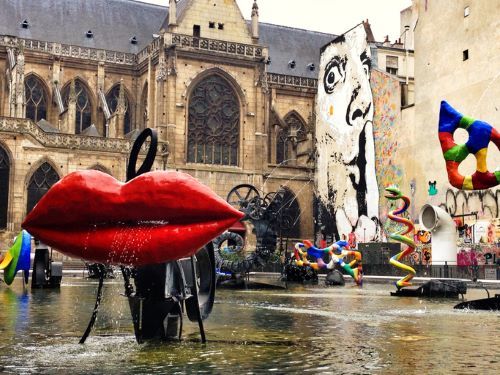Off the Air But On the Record with Alain Bertaud
February 15, 2024

Marvel at how a conversation about famously disruptive buildings turned into one about Adam Smith and trust in society.

Marvel at how a conversation about famously disruptive buildings turned into one about Adam Smith and trust in society.
Not all conversations end on cue. And isn’t that wonderful? In January 2024, I had the chance to interview a great urbanist, Alain Bertaud. We couldn’t both talk about everything we wanted to talk about AND stay within the time limit of the podcast. (We did exceed the 45-minute target, but we kept it less than an hour!) So, for the first time, I’m giving you a bit of the conversation that was off the air but not off the record.
I’ll leave you with some of his answers to my further questions and allow you to marvel at how a conversation about famously disruptive buildings turned into one about Adam Smith and trust in society.
Whether you frequently tune in to The Great Antidote or not, I think you’ll really enjoy this episode. Bertaud’s experiences living and working in cities worldwide provides him with fascinating insight into the nature of cities: economic, political, cultural, and more.
What does Alain Bertaud think about the Centre Pompidou?
(The Pompidou sits somewhat in the center of Paris, contrasting the typical Parisian architecture. It is perhaps best known as a modern art museum.) https://www.centrepompidou.fr/en/collection/our-building
(The Pompidou sits somewhat in the center of Paris, contrasting the typical Parisian architecture. It is perhaps best known as a modern art museum.) https://www.centrepompidou.fr/en/collection/our-building
He likes it, even though the inside is kind of boring, like an airport. Most importantly, there is a good restaurant on the roof. Not expensive good, but good-food good. Especially when most museum restaurants are bad, it’s nice to be able to talk about the art you saw at the restaurant in the museum.
What does Bertaud think about the Barbican**?
(The Barbican can be found near the Shoreditch neighborhood of London, looming tall and brutalist. I got lost in it twice.)
https://www.rsc.org.uk/your-visit/our-theatres/the-barbican-in-london
(The Barbican can be found near the Shoreditch neighborhood of London, looming tall and brutalist. I got lost in it twice.)
https://www.rsc.org.uk/your-visit/our-theatres/the-barbican-in-london
He visited it semi-recently. He has no particular opinion on it. I asked him how it could be that he had no opinion on a building so opinion-provoking? “Sometimes that happens” he said.
Great thinkers know a lot of things, and have a lot of opinions, but fantastic thinkers have these qualities and the humility to say when they don’t know.
What does Bertaud think about architecture’s relationship to community?
If Londoners all have heated opinions on the thought-provoking Barbican, and they engage about and look at the same scene, could architecture then be considered that a community building institution? Although Bertaud maintains that design cannot solve big community problems, (for example, providing nicer apartments will not be the solution to crime), he says that the designs in a community reflect the culture and conditions of a place. For more on the crime question, be sure to listen to the whole episode!
Trusting cities tend to have a transparency between the public space and the private space; cities lacking in trust have more obvious separations, such as walls. In speaking of trust, he points to cafés in Paris and Rio, with seating sprawling openly onto the sidewalk. New York lobbies with glass walls and ornately decorated interiors are visible to the public. This transparency shows trust and it reveals vulnerability, all by choice. Café owners who provide outdoor service are vulnerable to people who might dine and dash (leave without paying for their food). Providing this service is an act of trust. It’s trusting your customers and your community. Bertaud assures us, if community trust in these locations decrease, the transparency into private life would as well. .
Bertaud points to San Salvador, the capital of El Salador, as an example of what happens when trust in a community is lost. He enjoyed his time living there, before the country’s civil war in 1979. He called the following example a caricature but says that it illustrates the point well: Before the war, the city had a smattering of little gardens full of tropical plants, well cared for, but during and after the war, the city’s decorations became concrete walls topped by barbed wire. The transformation highlights how open, shared environments become closed and cold when community trust evaporates.
Trust, or the lack thereof, is an important characteristic of a city. Although design can’t create trust out of nowhere or solve problems like crime, people can. Then the design, whether it’s a glass storefront, a garden, or a sidewalk sprawl of snacky city-goers, begins to reflect the new openness in the community. The people might become a little nicer, a bit more friendly, and you can see that, because you can see them. As Adam Smith put it:
Frankness and openness conciliate confidence. We trust the man who seems willing to trust us. We see clearly, we think, the road by which he means to conduct us, and we abandon ourselves with pleasure to his guidance and direction. Reserve and concealment, on the contrary, call forth diffidence. We are afraid to follow the man who is going we do not know where. The great pleasure of conversation and society, besides, arises from a certain correspondence of sentiments and opinions.
Bertaud and Smith understand the role of trust in society, and with their guidance, we might be able to better think about the trust in our communities and the buildings all around us.
Want more?
Chelsea Follett, Cities as Centers of Innovation: Lessons from Edinburgh and Paris, at AdamSmithWorks
Janet Bufton, Great Antidote Archive: Ed Glaeser on The Unseen Beauty of Cities, at Speaking of Smith
Ryan Muldoon's Freedom is Different People: Cities & Inclusive Freedom
Andrew Smith's On the Development of Communities